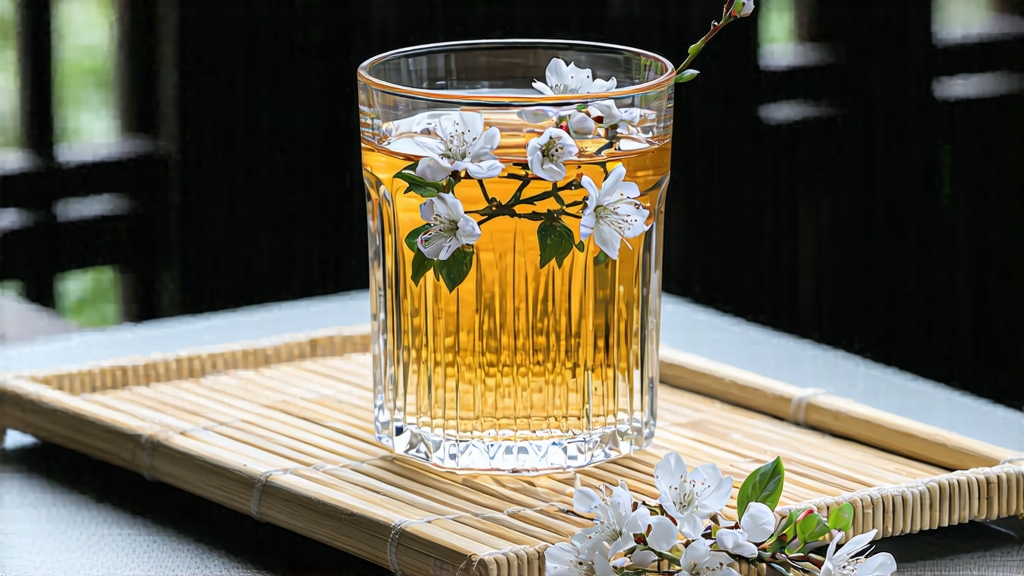
Among the six great families of Chinese tea, white tea is the least theatrical yet the most elusive. It is not rolled, not roasted, not twisted or slapped; it is simply picked and allowed to fall asleep under the sky. Within this minimalist lineage, Bai Hao Yin Zhen—“Silver Needle White Down”—is the crown jewel, the only white tea made exclusively from unopened leaf buds. One sip carries the cool air of pre-dawn spring, the mineral breath of Fujian’s granite mountains, and a sweetness that arrives five minutes after you swallow. For international drinkers who have met only the pale woodiness of generic “white tea” bags, the real Yin Zhen is a revelation: a quiet lightning bolt that rewrites the lexicon of flavor.
History: from imperial tribute to minimalist icon
The first written record of “white tea” appears in Song dynasty treatises (960-1279), but those leaves were compressed cakes of whitish-green tea from the north of Fujian, not the loose buds we know today. The modern pedigree of Bai Hao Yin Zhen begins in the 1790s around Taimu Mountain in Fuding county. Local monks and hermits discovered that the newly imported Da Bai Hao cultivar—literally “Big White Down”—produced buds so plump they looked like sleeping silkworms, covered in a down so dense it resembled frost. By the Guangxu era (1875-1908) these buds were being sun-dried, packed in lead-lined tins, and floated down the Min River to Fuzhou’s foreign hongs for export to Europe, where Victorian merchants christened them “Silver Tips” and sold them at twice the price of Keemun. In 1915 Yin Zhen won gold at the Panama-Pacific International Exposition in San Francisco, sealing its global reputation. During the twentieth century the tea all but vanished outside China as war and trade barriers intervened; only since the 1990s has it re-emerged, riding the wave of China’s artisanal tea renaissance.
Terroir: why Fuding tastes like moonlight on wet stone
Chinese tea law grants Protected Origin Status to Bai Hao Yin Zhen from two micro-regions: Fuding and Zhenghe, both in northern Fujian. Fuding’s coastal granite uplifts, 200–800 m above sea level, trap maritime fog that diffuses sunlight into a soft silver glow. The soil is acidic, rich in potassium and quartz; the nights are cool, the days warm but rarely scorching. These conditions force the tea bush to thicken the cell walls of its buds, storing amino acids and aromatic oils that translate into the cultivar’s signature “cooling” flavor—part cucumber skin, part fresh lychee, part river stone. Zhenghe, slightly inland and higher, gives a rounder, creamier cup, but connoisseurs prize Fuding for its crystalline lift.
Cultivar: the biology of a bud
Only two clonal varieties are legally permitted for authentic Yin Zhen: Fuding Da Bai Hao and Zhenghe Da Bai Hao. The Fuding strain has larger buds (2.5–3.5 cm) with 5–7 layers of protective cataphylls, each layer adding a new fold of down. A single kilogram of finished tea requires roughly 30,000 buds, all picked between the Qingming festival (early April) and the third week of April, before rain dilutes their sugars. Pickers work at dawn, when the dew is still a liquid mirror, because surface moisture prevents the fragile hairs from breaking off in the basket.
Craft: the art of doing almost nothing
White tea’s minimalism is deceptive; the fewer the steps, the more ruthless the precision. After picking, the buds are spread on bamboo trays 1–2 cm thick and left outdoors for 30–60 minutes of “sun withering.” The goal is not desiccation but a gentle enzymatic awakening. They are then moved indoors to ventilated racks where they rest for 24–36 hours at 22–26 °C and 65–70 % relative humidity. During this time the buds lose about 70 % of their moisture while endogenous enzymes convert lipids into floral lactones and catechins into sweeter dimers. No machine is allowed to hurry the process; fans may be used, but never heaters. Finally the teas are given a